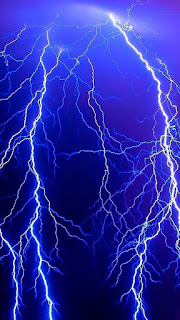Electricity
electricity:
Lightning: Lightning is a natural phenomenon caused by the buildup of electric charges in the atmosphere, resulting in a discharge of electricity.
Batteries: Batteries use chemical reactions to produce a flow of electrons, creating a source of electric energy that can power devices such as flashlights, smartphones, and electric cars.
Electric circuits: Electric circuits are networks of interconnected components, such as resistors, capacitors, and transistors, through which electric current can flow.
Generators: Generators use mechanical energy to convert motion into electricity, such as in hydroelectric power plants and wind turbines.
Electric motors: Electric motors use magnetic fields to convert electrical energy into mechanical energy, such as in fans, refrigerators, and electric vehicles.
Lightning rods: Lightning rods are used to protect buildings and structures from lightning strikes by providing a path for the electric current to follow, safely grounding it.
Electrostatic discharge: Electrostatic discharge (ESD) is the sudden flow of electricity between two objects with different electrical potentials, often causing damage to sensitive electronic devices.
Electric fences: Electric fences use a high voltage electric shock to deter animals or people from crossing a boundary.
Solar cells: Solar cells convert sunlight into electricity by using the photovoltaic effect, producing a renewable source of electric energy.













Comments
Post a Comment